
Cooking beef in a roasting pan involves little effort and results in an impressive, hearty entree suitable for everyday dinners or special occasions. The selection of meat depends on your flavor preferences and your food budget. Tenderloin roast, strip roast and ribeye roasts are tender, juicy cuts. Inexpensive cuts such as chuck roast, shoulder roast and round roast are flavorful but may be tough. Use a heavy pan, which distributes heat evenly without burning.
Step 1
Sprinkle the beef with salt and freshly ground black pepper. Additionally, you can season the meat with seasonings such as garlic powder, onion salt, lemon pepper, thyme, basil, parsley, marjoram or commercial spice rubs or blends.
Step 2
Put a rack in the roasting pan to elevate the meat above the meat drippings, then place the roast fat side down on the center of the rack. Some roasting pans have elevated ridges on the bottom instead of a removable rack.
Step 3
Insert an ovenproof meat thermometer into the thickest part of the roast. Be sure the thermometer isn't touching bone or fat. Do not cover the pan and do not add liquid. Cooking roast beef in liquid is a separate cooking technique known as braising.
Step 4
Place the roast in an oven preheated to 350 degrees Fahrenheit. Exceptions are eye round roast and round tip roast, which are best cooked at 325 degrees F, and tenderloin roast, which is cooked at 425 F.
Step 5
Remove the roast beef from the oven when the meat thermometer registers five to 10 degrees below the desired final temperature. For example, a medium-rare roast is removed at 135 degrees F because the temperature will rise to 145 degrees F after the meat is removed from the oven. For a medium roast, remove the meat at 150 degrees F, and for a well-done roast, remove the meat at 160 degrees F.
Step 6
Place the roast beef on a sturdy cutting board. Cover the beef loosely with aluminum foil to hold in the heat, then let the beef stand for 15 to 20 minutes before carving. During this time, the meat will continue to cook. Additionally, allowing the meat to stand redistributes the juices evenly through the meat and makes the beef easier to carve.
Related Articles

How to Convection Roast a Brisket

How to Cook a Rolled Beef Chuck Roast ...

How to Get Skirt Steak Tender
How to Cook Boneless Top Chuck Steak in ...

How to Cook a Large Amount of Corned ...
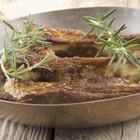
How to Sear Ribs

How to Cook the Neck of a Deer
How to Slow Cook a Pot Roast With Beef ...

How to Make a Black Pepper Crust on a ...
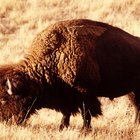
The Best Way to Prepare Bison Sirloin
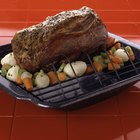
How to Cook a Really Tender Beef Roast ...

How to Cook a 15-Pound Rib Roast
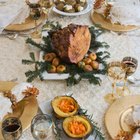
Shank Ham Cooking Directions

How to Make a Blackbuck Antelope Roast
How to Cook Roast Beef in a Cast-Iron ...
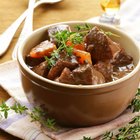
How to Cook a Beef Spleen
How to Cook Brisket Slowly With a ...

How to Cook Texas Broil Roast

How to Cook Deer Steaks in the Oven on ...

How to Cook Muskrat
References
Writer Bio
M.H. Dyer began her writing career as a staff writer at a community newspaper and is now a full-time commercial writer. She writes about a variety of topics, with a focus on sustainable, pesticide- and herbicide-free gardening. She is an Oregon State University Master Gardener and Master Naturalist and holds a Master of Fine Arts in creative nonfiction writing.
Photo Credits
Jupiterimages/Photos.com/Getty Images